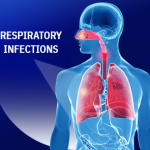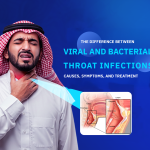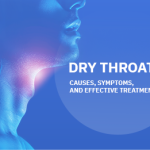Mumps
Viral diseases are part of our daily lives, and among the most notable is mumps, which raises concern among both children and adults, mumps is known for its ability to spread rapidly and its direct effect on the salivary glands, causing swelling and pain that may resemble influenza. Proper understanding of this disease, recognizing its symptoms, and knowing how to prevent it helps individuals deal with it effectively and limit its spread. In this article, we will review in detail what mumps is: its symptoms, modes of transmission, possible complications, treatment, and the main prevention methods.
- What is Mumps?
- Causes of Mumps
- Symptoms of Mumps
- Diagnosis of Mumps
- Treatment of Mumps
- How to Prevent Mumps
- Complications of Mumps
- When should you see a doctor?
What is Mumps?
Mumps is a contagious viral disease that causes swelling of the salivary glands, particularly the parotid gland, and is often accompanied by flu-like symptoms, it spreads easily among children and adults through respiratory droplets or contact with contaminated saliva. Prevention is possible through vaccination with the MMR (measles, mumps, rubella) vaccine.
Causes of Mumps
Mumps is caused by a virus found in the saliva of an infected person and can easily spread from one person to another in several ways:
- Droplets during talking, coughing, or sneezing: When an infected person coughs or sneezes, tiny droplets containing the virus are released into the air and can be inhaled directly.
- Direct or indirect contact: Touching surfaces contaminated with saliva droplets and then touching the face, kissing, or sharing drinking utensils such as bottles and cups.
- Close interaction with others: Participating in activities that involve close physical contact, such as team sports, dancing, or living with an infected person.
Infections often spread in crowded places or environments where close contact between people is common, such as schools, universities, and summer camps.
Symptoms of Mumps
The symptoms of mumps can vary from person to person. Some individuals may not experience any symptoms, while others may develop cold-like signs, the first noticeable sign of mumps is often swelling and enlargement of the parotid glands, which may be accompanied by several other symptoms, such as:
- Swelling and pain in the parotid glands on one or both sides of the face
- Weight loss due to loss of appetite
- Muscle pain and general fatigue
- Pain while chewing or swallowing
- Headache and fever
Symptoms usually appear about two to three weeks after exposure to the virus. Most people recover within two weeks without serious complications, especially if they have been vaccinated.
Diagnosis of Mumps
Doctors diagnose mumps through several steps to confirm the infection:
- Physical examination: This includes evaluating visible symptoms such as swelling of the parotid glands on both sides of the face, examining the tonsils, and checking body temperature to confirm fever.
- Saliva sample test: Used to accurately confirm the presence of the virus.
These steps help the doctor identify the disease quickly and take the appropriate measures to relieve symptoms and monitor the condition.
Treatment of Mumps
- Complete rest: Patients are advised to rest and avoid strenuous activities to reduce body fatigue.
- Fluids and hydration: Drinking plenty of water and natural juices to keep the body hydrated and replace fluids lost due to fever.
- Pain relievers: To reduce pain and fever, while avoiding aspirin for children.
- Warm or cold compresses: Applying warm compresses to the swollen glands can help ease pain, while cold compresses may reduce swelling.
- Soft and easy-to-chew foods: Because of parotid gland pain, soft or mashed foods are recommended to make eating easier without increasing discomfort.
Additional Tips
- Isolate the patient from others, especially unvaccinated children, to reduce the spread of infection.
- Monitor symptoms continuously to detect any changes or possible complications.
How to Prevent Mumps
The most important way to prevent mumps is vaccination with the MMR vaccine, which protects against three diseases: measles, mumps, and rubella.
It is recommended to take two doses of the vaccine according to the immunization schedule for children. The first dose provides initial protection, while the second dose helps strengthen immunity and significantly reduces the likelihood of contracting the disease again.
In addition to vaccination, personal hygiene plays an important role in limiting the spread of mumps:
- Wash hands thoroughly with soap and water, especially after coughing or sneezing.
- Cover the mouth and nose when coughing or sneezing with a tissue.
- Avoid sharing cups, spoons, towels, or any personal items with others.
- Ensure proper ventilation of rooms and enclosed spaces to reduce the accumulation of viruses in the air.
Complications of Mumps
Mumps is usually a mild illness and rarely leads to serious complications. However, in some cases, it may cause:
- Encephalitis or meningitis, affecting the nervous system
- Orchitis (inflammation of the testicles) in males, or oophoritis (inflammation of the ovaries) in females
- Miscarriage if the infection occurs during the first trimester of pregnancy
- Partial or complete hearing loss in some cases
- Pancreatitis and impaired pancreatic function
When should you see a doctor?
Consult a doctor immediately if you or your child develop symptoms of mumps, especially within the first five days of swelling, or if you experience:
- Fever of 39°C (102°F) or higher
- Confusion or difficulty concentrating
- Trouble eating or drinking
- Abdominal pain or swelling and pain in the testicles
Mumps is a viral disease that can be easily prevented through vaccination and by following proper personal hygiene practices, early recognition of symptoms and continuous monitoring provide the ability to control the disease and reduce the risk of potential complications.






